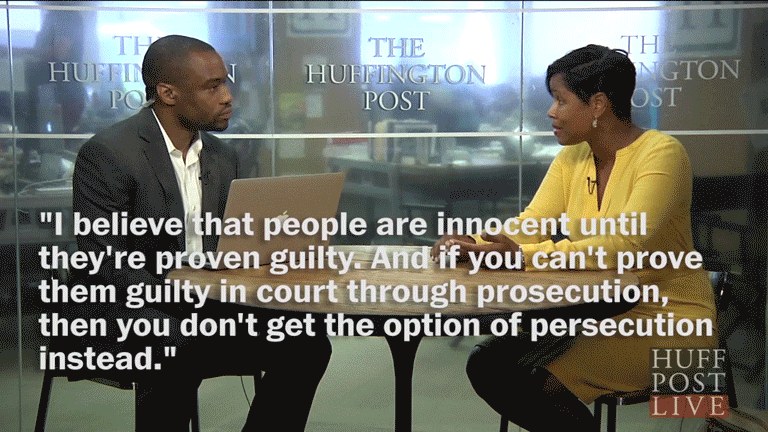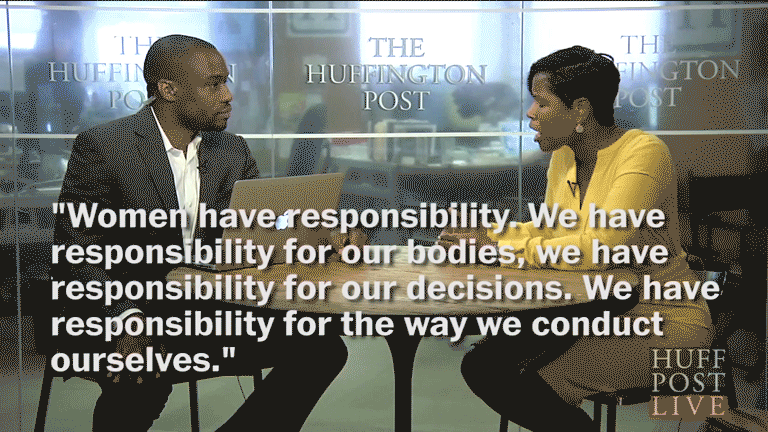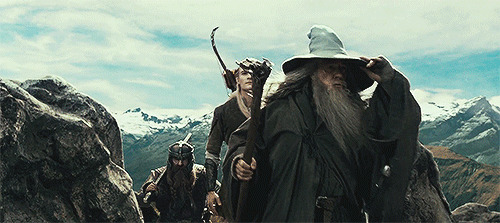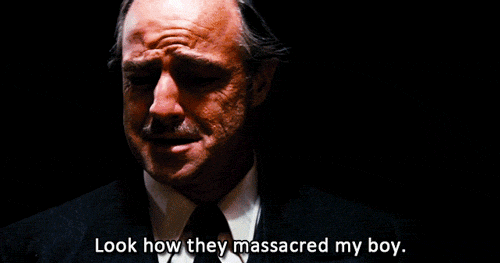You're undoubtedly familiar with the following scenario: You're sitting at brunch, or in class, or chatting with a group of randoms at a party when the conversation turns to that one movie everyone has obviously seen because, duh. "This metaphor I am trying to construct is so Rosebud," the snootiest person in that particular instance says, to which you reply: "Oh, I've never seen 'Citizen Kane.'"
Then you're spending the next 38 minutes of your life cleaning up drool after everyone's jaws hit the floor, and explaining how it could possibly be that you are a functioning adult with subpar cinema education that is somehow able to form sentences.
In solidarity with all those who have been shamed one too many times over the movies they OMG, haven't seen, HuffPost Entertainment surveyed The Huffington Post newsroom to find out which beloved films our esteemed editors have yet to see*. We then asked them to review those movies without seeing them, based solely on general knowledge and what they've heard about them over the years.
The following reviews are probably better than some (all) of these movie plots:
"Titanic"
Rich girl meets poor boy. They fall in love and things get sexy. He's the king of the world! The ship sinks! They make it to a floating piece of wood. There's definitely enough room for both of them on it, but she takes up the whole thing and he dies. Rude. A billion years later she's old and has a big diamond necklace? -Alexis Kleinman
"Goonies"
There's a group of kids and one of them is fat, which people thought was funny in the '80s. Their lives are boring and they find an abandoned, scary house and run around screaming. They never say die. The fat kid grows up to be matinee idol-shaped and marries a '90s supermodel, while the rest fall prey to the ravages of time. -Meredith Melnick
"Star Wars"
Over the years, I've heard a lot about "Star Wars" and I've seen "Space Balls," though that doesn't really help me. I know "Star Wars" starts off with rolling credits that say, "In a galaxy far far away ..." There's also this guy, Han Solo (the main character) and he's a good guy. I think he fights for the universe? He loves Princess Leia. He has a gang of friends, R2D2 and Chewbacca, who speaks really funny and will say things like "me love peace Chewbacca says," or something along those lines. Hans has to fight to save someone or some people, so he takes on Darth Vader (who is a heavy breather). When they're fighting in an epic lightsaber fight, somehow they realize they're related. And that's when evil guy Darth says, "Luke, I am your father." -Carly Ledbetter
"The Princess Bride"
A lovely young woman who later becomes Jenny in "Forrest Gump" is betrothed to a giant whom she doesn't want to marry. She meets the prince she does want to marry, but then a war breaks out and the prince has to fight for her honor somehow. He wins the war and then she realizes that it was the magical giant all along. They live happily ever after. -Kate Palmer
"Avatar"
A short time ago in a galaxy next to ours lived a race of feral humanoids called Avatars. Avatars look like a gaggle of slendermen who got in a terrible accident at the factory where they make blue Sour Patch Kids, with hair that'd make Jack Sparrow smile. Through some awful luck, the atmosphere on their planet is becoming increasingly poisonous, threatening to kill off all life there. And so we watch as two particularly ambitious Avatars -- one lady, one gentleman -- spearhead the onerous effort to save their beloved, crappy home somehow using spears and bows. Will they fall in love? Probably. Will they be successful? There's a sequel coming out in a couple years, so, probably. Will they learn an important lesson on environmental conservation? Absolutely. -Sara Boboltz
"Scarface"
"Scarface" is a typical gangster/mob movie with Al Pacino as the kingpin (?) with a hot wife, played by Michelle Pfeiffer (in her breakout role). There's plenty of sex and drugs (cocaine, definitely) involved, paired with even more violence and blood. Oh, and Pacino has a scar on his face, or he acquires one at some point in the movie. He also says his famous, "Say hello to my little friend," line. THE END.
(Side note: I do know this movie was referenced in the "hot tub" version video of
"Heartbreaker" by Mariah Carey.)
-Julia Brucculieri"Thelma and Louise"
I imagine "Thelma and Louise" to be a lot like Beyonce and Lady Gaga's "Telephone" music video. Right? Two fiercely dressed women, driving a Cadillac through the desert and taking justice into their own hands. It's the type of film you should watch with your best friend on a Friday night -- when all you want to do is drink white wine and stare at a pre-Jennifer Aniston, pre-Angelina Jolie Brad Pitt. -Christine Roberts
"Frozen"
Josh Gad is a snowman or something? And there are two pretty white girls who smirk a lot. Annnnnnd one of them can freeze stuff with her hands. -Alexander Eichler
"Clueless"
Alicia Silverstone has straight blond hair, and wears mini skirts and kitten heels. This was fashionable in the 1990s, apparently. The movie is based on some Shakespeare movie and often quoted in real-life conversations, except the references are totally lost on me because I don't know anything about this movie. It is on Netflix. -Alexandra Ma
"The Exorcist"
Everything I know about "The Exorcist" I learned from watching parodies, or blatant rip-offs, of "The Exorcist." So, according to a particularly scary episode of "The Simpsons," it's about a dude who makes his head spin 360 degrees around his neck in an attempt to convince his family that he needs to take a sick day. Most of the movie is accompanied by a soundtrack that involves banging on the two highest-pitched keys of a piano over and over and over again, making you wish you could somehow cover your ears and your eyes. It's best watched during the day, or with the lights on, or, preferably, both. -Maddie Crum
"Nightcrawler"
An unassuming young man, memorably played by Jake Gyllenhaal, discovers himself slowly, inexplicably transforming into an "X-Men" mutant. The man leans into his mutation, assuming a new name (Nightcrawler!) and embarks on a double life of post-meridian vigilantism while still showing up on time for his day job as a bank teller. But his co-workers fail to accept his new identity -- particularly his blue, lizard-like skin and pointy tail -- and the Nightcrawler decides to move on. As the credits roll, he's crossing a barren landscape in search of Professor X and his cadre of super-humans. I smell sequel!!!! -Catharine Smith
"Wet Hot American Summer"
Here's what happens and how good it is: some beautiful and ageless stars who go on to be very famous (I see you, Amy Poehler and Paul Rudd and Elizabeth Banks and Bradley Cooper) somehow come together and form the most beautiful, ageless summer camp staff ever. (But AFAIK there are no counselors from the U.K. and Australia making less-than-minimum wage to experience the U.S. and greatly increase the hotness-per-capita levels in wooded areas -- so, for me, it is not a true representation of an early-aughts summer camp staff, to be totally honest.)
Many hijinks ensue and people have told me that the story and the cinematography are not technically great, but it's also, like, great, and as someone who spent her formative years at sleepaway camp, I need to see it and I will get it and tattoo the script on my body, probably. Also, is Paul Rudd a secret model robot to make us mortal humans feel bad, or what?! Dude looks great. -Jill Capewell
"The Matrix"
As far as I can tell, "The Matrix" is a sci-fi movie that involves picking the right color pill and running through green lasers. The movie is set in the distant future, when the hero, Keanu Reeves, figures out that the reality we think we're living is all a big fat lie -- we're all actually staring at screens. So he travels through the Internet tubes to try to get the real story so he can spread the news. Then the head of the mission tells him he can take a pill to get out, or one to forget that his life is all a lie. We never find out which one he takes. -Hollis Miller
"The Lord of the Rings: The Fellowship of the Ring"
The Hobbits are going to Isengard! And Mordor! Or something! From its distinctive pennywhistle-heavy soundtrack, you'd expect this film to be a fun romp through the forest, but it gets dark fast. Real fast. Before you know it, trees are talking to each other and Gandalf is trapped in a tower by the evil lords of Mordor. Frodo the Hobbit puts on a ring and journeys through the wilderness to save the whole world with his annoying friend Sam, who needs to come for inexplicable reasons. Along the way, the two meet a Dobby-like creature who enjoys potatoes and, like a slimy, hairless Gremlin, is confusingly both mean but also sometimes nice. If you're interested in a worse version of "Harry Potter," "The Fellowship of the Ring" is a coming-of-age fantasy not to be missed! -Julia Bush
"Harry Potter and the Sorcerer's Stone"
Admittedly, I haven't seen any of the movies in the "Harry Potter" franchise. I know. What I actually do know, however, or at least think I do because one of the "Harry Potters" weasled its way into the top 10 highest grossing movies of all time list (which means it's everywhere), is that Harry Potter is a child wizard. He is raised poor and sad, like the kid from "Willy Wonka" minus the love. He has a lightning tattoo on his forehead and when he is sent to boarding school because, as mentioned, no one loves him, he discovers he can do cool magic tricks. Some words I think I picked up are Dumbldore, Mordor, Butterfinger, Muggle and Hermione. Why more than one movie was made is beyond me, but good for you, J.K. Rowling. -Liat Kornowski
"Interstellar"
Hi, my name is Lauren Duca and I never saw "Interstellar," because I generally find space movies that are not "Star Wars" to be hot garbage. Based on never seeing "Interstellar," I know that what happens is a young Anne Hathaway and regular-aged Matthew McConaughey form a father-daughter bond based on being father and daughter. Then Anne Hathaway grows up and Matthew McConaughey gets a little bit older looking, but not that much older-looking really? From there, the plot continues as follows: America. America. Space. America. The question of whether humanity will survive??? America. America. Space. America. America. And then the film ends with humanity surviving (!!!) and the continued McConaissance. -Lauren Duca
"Inception"
Oh, the craziest thing ever! In the movie "Inception," Leonardo DiCaprio's character experiences life within a dream within a dream within a dream. The film is a real thriller because every time you think the action is occurring in reality, it's actually happening in a dream! "Inception's" plot is synonymous with the word "meta." -Kate Bratskeir
"The Color Purple"
After falling asleep during the Broadway version of "The Color Purple," I still have no clue what the film is about. All I know is, it's directed by Steven Spielberg and stars Whoopi Goldberg (who won a Golden Globe for Best Actress in '86), and Oprah Winfrey. Oh, and this famous line: "YOU TOLE HARPO TO BEAT ME!?!?" -Brennan Williams
"Blue Velvet"
I guess you can't be a David Lynch fan if you haven't seen "Blue Velvet," or so many of my friends tell me. According to Netflix, the film follows a murder mystery in a small, logging town. So I imagine this to be the prequel to "Twin Peaks," in which we learn the real backstory of FBI Special Agent Dale Cooper. (Laura Dern, Laura Palmer. Hello?) Upon returning home to take care of his aging dad, Agent Cooper -- who, for some unknown reason, is going by the name Jeffrey -- discovers a random, severed ear, thus launching not only an obsession with law enforcement, but also a burgeoning taste for donuts. Isabella Rossellini is obviously Log Lady, who, at this stage in life, may or may not being wearing a lot of blue clothing, but is most certainly not yet infatuated with a clairvoyant log. Dennis Hopper is Killer BOB on drugs, literally. They all hang out at a nightclub. Someone lip-syncs Roy Orbison's "In Dreams." It's amazing. -Katherine Brooks
"The Terminator"
Everyone -- including me! -- has seen "T2: Judgment Day," which is maybe why I've never bothered to go back to the original. My friends say I've gotta watch it. I expect it's good, but probably a bit slower, less refined and confident than the sequel. It probably features bigger hair, too. I bet it'll still freak me out. -Damon Beres
"The Godfather"
"The Godfather" is presumably about Italian mobsters, and I'm going to guess they live in New York (or maybe Long Island) because 45 percent of all movies take place in New York (or maybe Long Island) and the other 45 percent take place in Los Angeles, and no one would ever shoot a gangster film in Los Angeles, unless you count "Pulp Fiction," which I do not.
This movie is a classic, which means there is a really good look to the movie, which means there is probably an Instagram-like filter over the entire thing. I'm going to guess "Valencia," but it could be more of an "Earlybird" thing. Real dark though. Real dark. I bet the accents are real good too. None of that "Goodfellas" bullshit.
OK, the plot. It's a gangster film, and once you've seen one gangster movie you've seen them all. (Don't blame me for speaking the truth.) So basically, everyone is happy and gangster people are doing gangster stuff. Sometimes they need to "off" people, but there is a code, and they all enjoy living by it. After all, these are good Italian people. This is family.
But then, something fucked up happens, i.e. someone breaks the code. Drugs, probably. The Godfather (I'm assuming this is a nickname for the top guy and not someone's actual Godfather, although that would be cool) is mad, and he's like, "We need to bring our society back to order," and since they are gangsters they do that by killing a lot of people. At some point, a wife cries and children hide behind a door. "I'm sorry darling," a bit character who showed some promise in the movie but whose career never quite materialized, says to his wife, who is so beautiful it's, like, why would she marry a gangster? "It wasn't supposed to be like this."
Since "The Godfather II" and "The Godfather III" exist, I'm assuming that "The Godfather" lives and that eventually things get back to normal somewhat, but in other ways things are never the same. Like The Old Order is over and there are new rules now. Probably there is, like, a reorganization of the gangsters and there is one guy who is power hungry and that guy becomes the basis of "The Godfather II." Oh, and I bet there is a lot of cigar and cigarette smoking in this movie. Roll to credits. -Maxwell Strachan
* Obviously, now they have to see them. Stay tuned for more!
Also on HuffPost:
For a constant stream of entertainment news and discussion, follow HuffPost Entertainment on Viber.
-- This feed and its contents are the property of The Huffington Post, and use is subject to our terms. It may be used for personal consumption, but may not be distributed on a website.
![]()
![]()
![]()
![]()
![]()
![]()
![]()
![]()













































